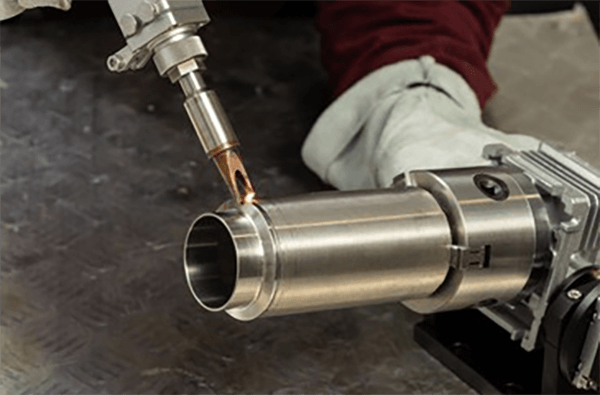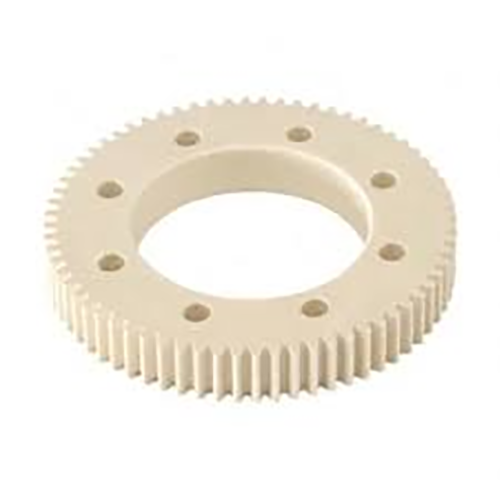
Delivering appointed top-layer smoothness for a manufactured item is vital.
- Specification callouts prescribe the detailed finish for parts
- Technical callouts use Ra, a measure of average irregularity, to quantify finish
- Comprehending finish specifications is crucial to meet operational standards
- A well-defined surface finish can impact factors such as lubrication, friction, and durability
- Accurate interpretation of callouts is required to realize the targeted surface
Precision Engineering Through CNC Machining

Programmed machining operates as a leading production process using CNC instructions the equipment fabricates detailed forms with consistency.
- Numerical control tools generate quality components from varied media
- CNC’s flexible capabilities match requirements of aerospace and automotive fields
- CNC machining delivers exceptional repeatability ensuring identical parts across production runs
Across R&D to production scale-up CNC machining drives manufacturing evolution
CNC Specs Explained
Decoding CNC machine specifications can feel daunting at first glance
Though a little background plus organization helps you interpret technical details effectively
Commence with recognizing main metrics: spindle rpm, feed, precision, work volume, control system
All these parameters affect the tool’s total functional output.
Consider that higher spindle velocity suits pliant materials while elevated feed boosts capacity.
Comprehending those interactions assists in picking the proper CNC for tasks
Ensure you peruse vendor documentation exhaustively.
Those resources usually offer helpful explanations and clarify jargon
A Guide to CNC Machines: What You Need to Know
G-code driven machining centers are computer-run systems for precise automated production of varied materials They operate by interpreting digital instructions called G-code to control cutting tools or other actuators.
- Some types of CNC machines include milling machines lathes routers and plasma cutters
- CNC machining processes are highly versatile and can be used to work with a wide range of materials including metals plastics wood and composites
- In addition these machines facilitate quick prototyping and short-run manufacturing for startups and labs
CNC Fundamentals and Principles
CNC machines represent a remarkable fusion of mechanical precision and sophisticated software control Programmable machines execute software-driven fabrication of straightforward components and complex constructions The fundamental principle behind CNC machines is the translation of digital designs into physical forms.
- Software-driven machining
- Digital-to-physical process
It performs sequenced precise axis operations dictated by program Manufacturing staff set tooling parameters, oversee machining, and confirm quality outcomes.
Surface Finish Considerations for CNC
Attaining target texture in CNC processes is critical It modifies operational efficiency and cosmetic finish Substrate properties, machining variables, and post-process methods shape surface outcome.
A smooth surface finish can enhance the product's durability while a rougher finish may reduce its effectiveness Automated machining presents a spectrum of techniques and tools to accomplish desired finishes.
- By using distinct cutter geometries |high-speed steels|tool speed tuning to deliver finish
- Moreover post-machining steps like polishing or sanding improve surface quality
Appreciating the link between settings and surface quality helps achieve ideal finishes.
Understanding CNC Machines: A Beginner's Guide
This precise method uses computer-guided machinery to sculpt components from diverse substrates They process digital commands to produce elaborate components repeatedly Understanding machine control, programming, and tooling choices is crucial for effective machining
Industries that use CNC range from aviation and automotive to medical and electronics From engine components to precision tooling, CNC enables production of sophisticated geometries
Surface Finish Callouts for CNC Machined Parts
Correctly specifying finish is vital for CNC-produced components It ensures that the final product meets the requirements for function and aesthetics Technical callouts frequently employ Ra as the roughness metric Noted in microns or millimeters, the value quantifies average texture height.
Evaluate both finish smoothness targets and the operational application before specifying

Generally fine finishes benefit components requiring precision alignment and tolerance
Rugged finishes sometimes serve parts that need enhanced traction or grip
Apply clear finish annotations in technical drawings to state desired texture Enter the Ra specification and describe any post-process finishing or treatments.
Consider that thorough finish callouts underpin quality manufacturing
Varieties of CNC Machines and Capabilities
The world of CNC machining is vast and diverse with a wide array of machines designed to tackle various types of tasks They adopt CAD-to-CAM pipelines to steer cutting tools for precise part manufacture.
- Drilling units excel at producing holes and axial features in parts
- Grinders use abrasive wheels to finish and size parts to fine tolerances
- Laser systems produce fine kerfs and detailed shapes in thin materials
Pick machines based on material compatibility, feature detail, and dimensional demands Machine-specific strengths enable applications in fields ranging from aerospace to automotive engineering.
Attaining Superior Surface Quality via CNC
Creating superior finishes is essential and CNC control systems help produce them Through tailored feed rates spindle selection and tool design engineers control surface formation and limit imperfections Moreover premium cutters and correct coolant application enhance surface outcomes Deliberate machining strategies and exact setups enable production of components with excellent texture.
Achieving Surface Finish in CNC Programming
Programming skills that affect finish are critical for reaching surface goals Combining feed, speed, and tool form strongly affects surface pattern and roughness Careful selection of these parameters in conjunction with proper lubrication and coolant management can yield a smooth and flawless surface finish.
- Furthermore regular tool maintenance and inspection are essential for ensuring a consistent and high-quality surface finish what is cnc over time Plus regular inspection and maintenance of tools copyright finishing standards Also ongoing tool care and inspection support sustained finish reliability
- To optimize surface finish programmers should consider factors like material type desired surface roughness and the application requirements
- Employing simulation software can help visualize and fine-tune cutting parameters before machining reducing the risk of surface defects
- In addition periodic tool servicing and checks secure consistent surface quality
